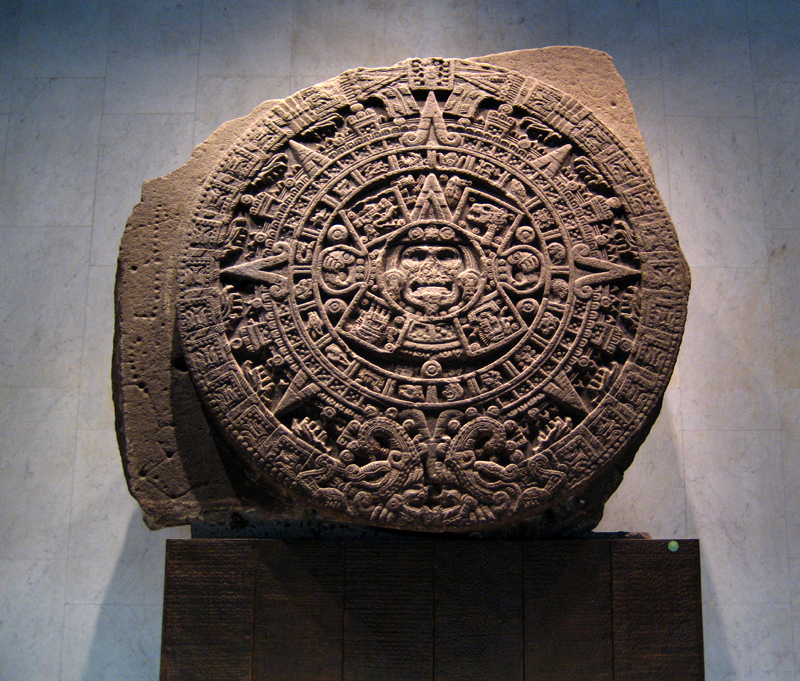Source: WTL© tourist photograph taken at MNA in 2007.
Date: This stone monument was sculpted during the reign of Axayácatl (1469-1479), the sixth Aztec emperor (tlatoani): 13-acatl / 13-caña; that is, 1479.
Notes: This giant carved and decorated stone disk measures 3.6 m across and it weighs between 22,000 and 24,000 k. This is a sun monument, not precisely a calendar, but it does contain elements of the Aztec calendar in it. Most scholars believe that originally it was displayed horizontally, not vertically as it is exhibited in a most prominent place in MNA's Sala Azteca. In the center is the sun god, Tonatiuh, whose tongue is sticking out (a symbol of obsidian knives used for sun sacrifices). He is seen with jade ornaments and evenly combed (golden?) hair shown symetrically on each side of his face. Originally, it was painted gold and red over exposed stone. Tonatiuh represents the Fifth Sun. In the surrounding circle we see four square boxes, one for each of the previous Suns. Continuing out from the center, beyond the circle with the four suns, the next and larger circle shows symbols for the 20 days of each Aztec month. The next ring is edged with four large A shapes with curling feet: these pointed shapes represent the four cardinal points. The top A shape is to be oriented toward the east, indicating the rising sun; the bottom A shape is oriented west, representing the feminine principal that leads to the setting sun and descent into the death and the underworld. In the next circle, which intersects with the four larger A-shaped cardinal points, are stones, feathers and elements related to sacrifices. The last circle at the outer ring depicts two Fire Serpents (Xiuhcóatl) below a glyph (symbol) for 13-Cane, the day date when the Sun Stone was inaugurated. The two serpents' heads are shown at the bottom with open jaws. In each open mouth is a head, presumably that of a sacrificed head: this represents the battles of life and death during the night and in the underworld.
For an artist's depiction of the Sun Stone as it may have appeared in full color upon its unveiling at the Templo Mayor (Great Pyramid) in Tenochtitlán in 1479, see: => Aztec Art #13a.

